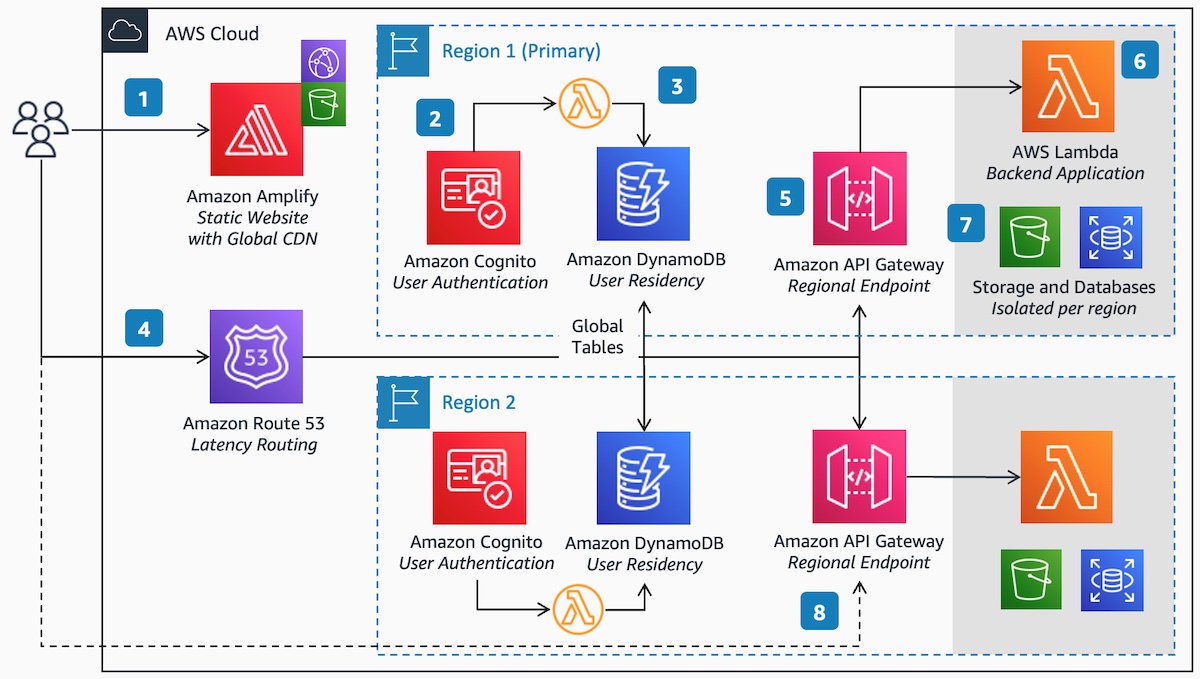Building your Multi-Region Architecture on AWS
 Morolake
Morolake
The growth of customer bases has led to businesses building robust and highly available applications by deploying across multiple regions. By pursuing global infrastructure, organisations can reduce latency, enhance availability, and maintain uptime even in the event of a regional failure.
An AWS region is a geographic area containing multiple, isolated locations known as availability zones. Deploying applications across regions provides potential benefits:
High Availability: in the event of a rare regional failure, the application can failover to another region and remain available.
Disaster Recovery: multi-region setups allow for quick restoration in the event of a disaster, ensuring business continuity.
Regulatory Compliance: utilising multi-region approaches can help meet local data residency and compliance requirements.
Reduced Latency: by placing resources closer to users, you can significantly reduce latency, improving the user experience.
Architecture Patterns for Multi-Region Deployments
Active-Active: in an active-active configuration, your application runs simultaneously in multiple AWS regions with identical infrastructure created in those regions. If one region goes down, the other remains available.
Active-Passive: in an active-passive multi-region setup, your application runs in a primary region while a secondary region stands by to take over in case of a failure or disaster in the primary region. The passive region is usually kept up-to-date with data replication but remains idle until needed.
Planning your Multi-Region Strategy
Requirements Analysis: A deep dive must be done to understand application needs. Is high availability prioritised over strong data consistency? Understanding these nuances will help guide architectural choices.
Data Replication: Determine how data will be replicated across regions. AWS offers options such as DynamoDB global tables and S3 cross-region replication.
Cost Management: Utilising multiple regions can impact your cloud budget. A careful evaluation of needs must be carried out, and cost-saving options must be leveraged.
Steps to Build a Multi-Region Architecture
Design your global network: start by clearly defining your requirements. Identify which regions are most strategic for your business and the geographic distribution of your user base.
Deploy core services in the selected regions: deploy your core services in each region, ensuring consistent architecture to simplify management and maintenance.
Configure cross-region replication: for storage services like S3, enable cross-region replication to ensure data synchronisation across regions.
Set up routing: use geolocation routing on Route 53, ensuring users are directed to the nearest AWS region, therefore reducing latency. Configure health checks and failover routing to automatically redirect traffic in the event of an outage.
Set up monitoring and alerting: when deploying across regions, ensure that observability and monitoring are replicated in the secondary regions as well.
Best Practices
Automate as much as possible: automate repetitive tasks like deployments and scaling operations.
Codify everything: utilise infrastructure-as-code tools, e.g., Terraform and CloudFormation, to ensure consistency across regions.
Update runbooks and documentation.
Conclusion
Deploying applications across multiple regions on AWS requires careful planning and consideration of different factors. By leveraging AWS’ global infrastructure, you create an application that meets the demand of a global audience and provides the benefits of reduced latency, high availability, and disaster recovery. Test and monitor multi-region architecture to ensure latency and failover meet expectations and employ IaC techniques.
Subscribe to my newsletter
Read articles from Morolake directly inside your inbox. Subscribe to the newsletter, and don't miss out.
Written by

Morolake
Morolake
Quality Assurance Analyst turned DevOps Engineer. Interested in all things Cloud Computing.